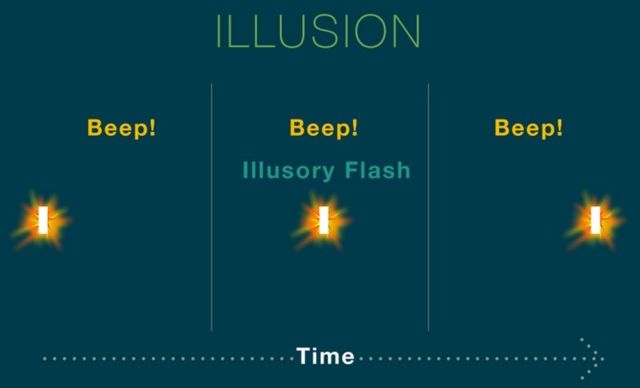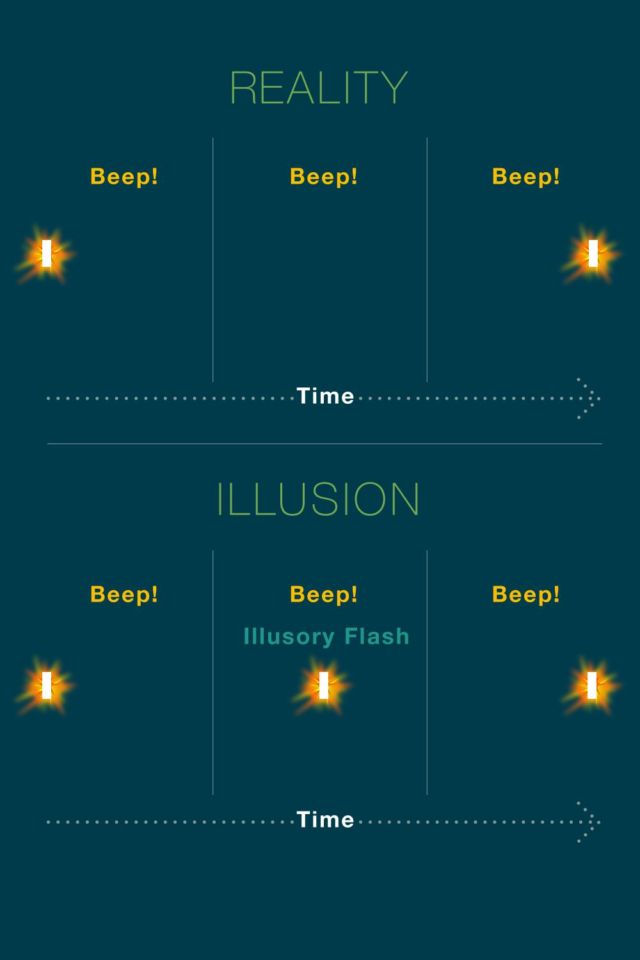Take a look at this time-traveling illusion that tricks your brain.
In this video watch how the brain retroactively makes sense of rapid auditory and visual sensory stimulation.
We experience the world through our senses, a constant torrent of sights, sounds, smells, and more. Our brains take these signals and process them, giving rise to our individual perceptions of the world. But sometimes our senses play tricks on us, notably in the case of perceptual illusions.
Now, Caltech researchers have developed two new illusions that reveal how the senses can influence each other—in particular, how sound can give rise to visual illusions. These illusions occur so quickly that they illustrate a phenomenon called postdiction (as opposed to prediction) in which a stimulus that occurs later can retroactively affect our perceptions of an earlier event.
The Caltech work is among the first to show this kind of time-traveling illusion across multiple senses.
First author Noelle Stiles (PhD ’15), a visitor in biology and biological engineering and a postdoctoral scholar–research associate at USC, explains:
“Illusions are a really interesting window into the brain. By investigating illusions, we can study the brain’s decision-making process. For example, how does the brain determine reality with information from multiple senses that is at times noisy and conflicting? The brain uses assumptions about the environment to solve this problem. When these assumptions happen to be wrong, illusions can occur as the brain tries to make the best sense of a confusing situation. We can use these illusions to unveil the underlying inferences that the brain makes.”
The fact that the illusory flash is perceived in between the left and right flashes is the key evidence that the brain is using postdictive processing.
source Caltech







Leave A Comment